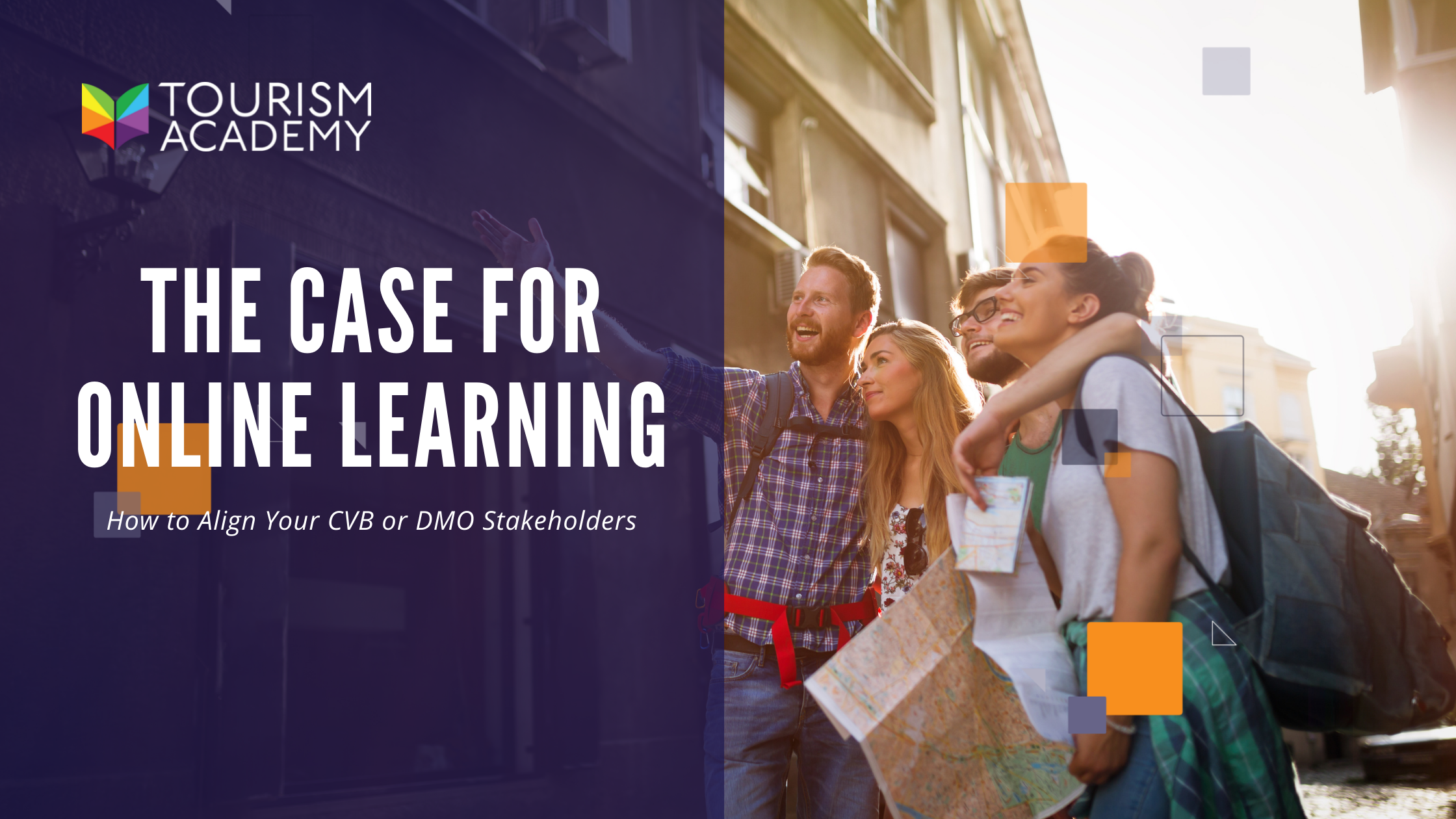
The Tourism Business Case For Online Training
I once worked for a large company where all new employees went through a 3-day on-boarding process. We sat through videos on safety and compliance, through lectures and powerpoint presentations. As proof we learned something, we filled out a workbook for each section and signed it at the end to demonstrate that we’d completed the training.
Great. I remember nothing.
3 days of soul crushing boredom; of not doing the job I was hired for; of various human resources and leadership staff being taken away from their daily jobs to put on this on-boarding and training course. Assuming these same human resources staff members must do this training at least once a month based on the turnover rate that’s 36 days a year these staff members are not handling their daily responsibilities. That’s 288 hours spent on-boarding employees, board members and stakeholders. Think of all the work that could have been accomplished in 288 hours. If that doesn’t help make the business case for online training, then let’s delve deeper into the reasons why your organization needs to implement eLearning.
RELATED: Tourism Ambassador Training & Certification
Noteworthy Statistics
-
eLearning requires 40-60% less employee time than ILT in a classroom (Brandon Hall Study). Remember that story about 3 days of onboarding? With eLearning that training can be completed about 10 hours.
-
Retention rates for employees & members are higher online at around 25-60% compared to classroom training at 8-10% (The Research Institute of America).
-
42% of companies say that eLearning increased their revenue (Ambient Insight 2012-2017 Worldwide Mobile Learning Market-Executive Report).
-
According to an IBM study, for every dollar spent on training there is a return of $30 in productivity. Getting people back to work more quickly seems profitable.
-
Training employees online results in 26% higher revenue generated per employee (The Business Impact of Next Generation eLearning, 2011).
-
After taking their training online, IBM saved around $200M (IBM Study).
The statistics are impressive. Online training saves organizations time and money. So invest in a good learning management system LMS and get your training rolling with measurable results for learners, DMO or CVB stakeholders and the organization.
Has your organization taken their training online? Tell us about your experience.
RELATED:
How to Create a Tourism Ambassador Program
Why Your Destination Needs Tourism Ambassador Certification
INFOGRAPHIC: Top Online Learning Statistics For Tourism Development
Bonus: Who are your stakeholders?
Bring destination stakeholders into alignment to support tourism:
Tourism Ambassadors from all possible market sectors come together to create a full visitor experience. Destinations, both big and small, can align these sectors successfully because each benefits from a positive visitor experience! Here are just a few of those who are positively impacted by your credentialed tourism ambassadors (CTA).
- Transportation hubs like Airports, Rail Stations, Bus Depots, etc.
- Activities, Attractions & Events - arts, culture, heritage, casinos, sports
- Government - City, State, Federal - elected officials like mayors and city council, government employees like police and community outreach
- Community Members - Passionate Volunteers & Local Citizens
- Conference Hotels, Convention Centers & Meeting Places
- Local Mom & Pop Shops and Downtown Merchants
- Community & Workforce Development / Economic Development
- Schools & Higher Education - colleges, universities, community colleges
- Medical Facilities - Urgent Care Centers & Hospitals
- Lodging & Hotels - home rentals, beds & breakfast, RV parks, hotels, etc.
- Bars, Clubs, Lounges & Nightlife
- Real Estate and Reinvestment Firms
- Places to Dine - coffee shops, restaurants, classy joints and local favorites
- Commercial Real Estate - malls, downtown alliances, retailers, districts, etc.
- Event Facilities - convention center, arena, theaters, concert halls, sporting events
- Modes of Transport - Uber, Lyft, taxi, cab, shuttle, public transit, local trolly, limo, motorcoach
- Tourism Promoters - Destination Marketing Organizations (DMO), Convention & Visitors Bureau (CVB), Chambers of Commerce & Community Economic Development Groups
- Everyone else - Tourism Spending benefits every local person and entity through reduced taxes and economic development, including local banks, corporations, etc.
Need help aligning your community, finding tourism ambassadors or designing your tourism ambassador program? Contact us today and our expert team will be happy to help you get the results you’re looking for. Cheers!
